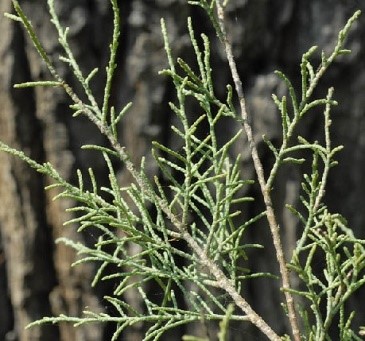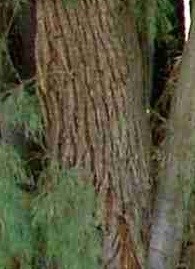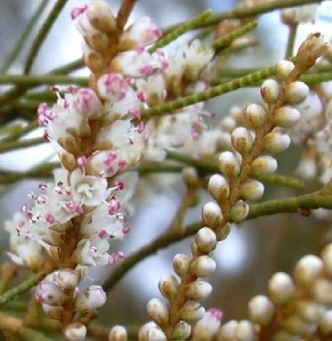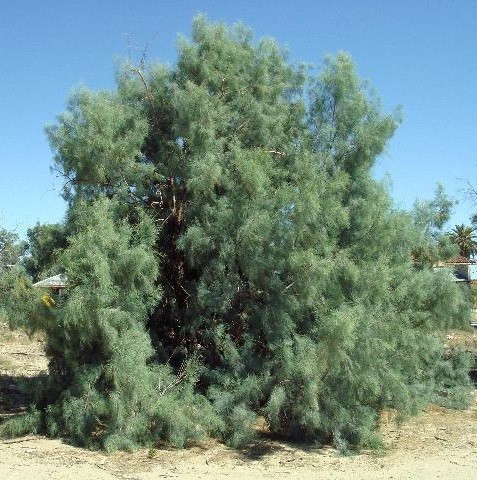Trees
Tamarix aphylla (L.) Karst.
Tamarix aphylla (L.) Karst.
Description :
A
large evergreen tree up to 40 m tall with a diameter of 1 to 2 m. The crown is
spreading and dense. The leaves are simple, variable in size and shape, oval to
oval-lance like 7 to 15 cm long, dark green, tough and leathery. The bark is smooth,
and the stem may be crooked. The bark is light to dark grey, with slight
depressions. The small white flowers have tassels and a sweet scent. They are
arranged in bunches of threes and bloom usually between February and March. The
fruit is a smooth, round fleshy berry that is purple black when ripe. The berry
contains a single seed. The berries are edible and mature between June and
August. It has no known insect or disease problems. It is reproduced both from
seed and by vegetative means. The seeds are small and should be planted
immediately after collecting and de-pulping. They lose viability rapidly and do
not store. It grows very fast. Height growth rates of 0.75 m/yr for young
stands have been reported. MAI of 10 to 12 m3/ha/yr is not uncommon
over rotations of 20 years. Wood is reddish grey to brownish grey. Grains are interlocked,
texture moderately fine. Wood is hard, heavy and resilient having specific
gravity of 0.70 and a calorific value of 4800 kcal/kg.
Distribution :
The
tree is native to the subcontinent including Pakistan. It has been successfully
planted in many areas of the world. In Pakistan, it is found in the plains and
lower hills of the Punjab, KP, and Azad Kashmir. A very intolerant tree that
grows on a variety of soils, from sands to loams as long as they are well
drained. It is adapted to a precipitation zone of up to 1250 mm/yr. It prefers
a semi-humid warm hot, sub-tropical winter/monsoon climate with a temperature
range of -5 to 40°C at elevations up to 1500 m. It will coppice easily. The tree
is frost hardy and can tolerate hot droughty conditions if irrigated.
Uses :
It
is a good tree for reforestation projects because of its fast growth and wood
value. It will do well on water-logged sites, and provides a number of useful
products including fruit and firewood. It is an excellent farm forestry tree
ideally suited for planting on waterlogged farm sites. Also used for construction,
fuel, fruit, medicinal (fruit is a carminative, seed for treatment of
diabetes), tannin, shelterbelts, apiculture, paper pulp, shade, fodder and
roadside planting purposes.



